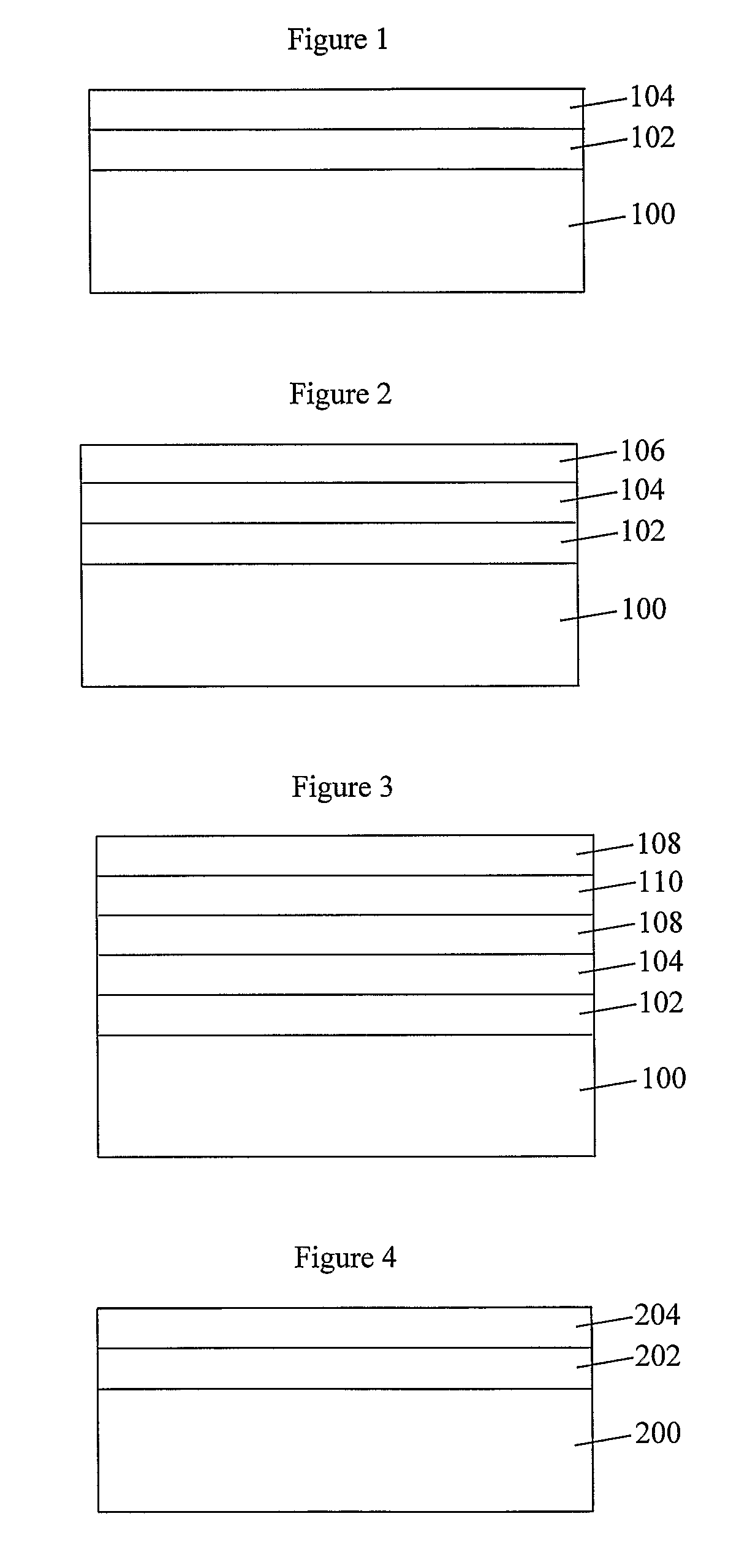Coated Substrates and Methods for their Preparation
a technology of coating substrates and coatings, applied in the direction of coatings, transportation and packaging, synthetic resin layered products, etc., can solve the problems of reducing the effectiveness of coatings, reducing the permeability of oxygen-containing materials, and often brittle coatings for use on materials with high thermal expansion, etc., to achieve low water vapor transmission rate, low permeability to oxygen, and high resistance to cracking
- Summary
- Abstract
- Description
- Claims
- Application Information
AI Technical Summary
Benefits of technology
Problems solved by technology
Method used
Image
Examples
example 1
[0124]A hydrogensilsesquioxane resin (26.68 g) having the formula (HSiO3 / 2) and a weight-average molecular weight of 7,100, 70 mL of toluene, and 10 μL (23% w / w platinum) of a solution of platinum(0)-1,3-divinyl-1,1,3,3-tetramethyldisiloxane complex in 1,3-divinyl-1,1,3,3-tetramethyldisiloxane were combined in a flask and heated to 80° C. Allyl glycidyl ether (48.4 g) was then added drop-wise to the mixture over a period of about 1 h. After completion of the addition, the mixture was allowed to cool to room temperature. Toluene and excess allyl glycidyl ether were removed under reduced pressure at 40° C. using a rotary evaporator. The residue was placed under vacuum (1 Pa) at room temperature overnight to give a silicone resin having the formula:
as determined by 29Si NMR and 13C NMR, and a weight-average molecular weight of 23,400.
example 2
[0125]Concentrated hydrochloric acid (37%, 600 g), 1020 g of toluene, and 3.0 g of octylsulfonic acid sodium salt monohydrate were combined in a flask. A solution consisting of 90.75 g (0.67 mol) of trichlorosilane, 100.15 g (0.67 mol) of methyltrichlorosilane, and 6.14 g (0.038 mol) of trichlorovinylsilane was added drop-wise to the mixture over a period of abut 1 h. The mixture was stirred at room temperature for 4 h, after which time the aqueous layer was removed. The resulting organic layer was washed with 100 mL of 45% sulfonic acid (two times) and with 250 mL of deionized water (10 times). The solution was dried over magnesium sulfate and passed through a sintered glass filter. Toluene was removed under reduced pressure at 30° C. using a rotary evaporator. The residue was placed under vacuum (1 Pa) at room temperature overnight to give a silicone resin having the formula:
(HSiO3 / 2)0.485(CH3SiO3 / 2)0.485(CH2═CHSiO3 / 2)0.03,
as determined by 29Si NMR and 13C NMR, and a weight-averag...
example 3
[0126]Toluene (967 g), 596.04 g (2.40 mol) of [3-(methacryloyloxy)propyl)]-trimethoxysilane, 855.84 g (4.80 mol) of methyltriethoxysilane, 28.8 mol of water, 10.6 g of tetramethylammonium hydroxide solution (25% aqueous), 2400 g of methanol, and 0.664 g of 2,6-di-tert-butyl-4-methylphenol were combined in a flask. The mixture was stirred and heated at reflux for 2 h. Solvent (7330 g) was removed by distillation using a Dean-Stark trap. During the distillation toluene was added to the mixture to maintain a constant resin concentration. The temperature of the mixture was slowly increased to about 110° C. during about 1 h. The mixture was then allowed to cool to room temperature. Acetic acid (3.4 mL) was then added drop-wise to the stirred mixture over a period 1 h. The mixture was washed with 1,000 mL of deionized water (ten times) and then filtered. Toluene was removed under reduced pressure at 40° C. using a rotary evaporator. The residue was placed under vacuum (1 Pa) at room tempe...
PUM
| Property | Measurement | Unit |
|---|---|---|
| thickness | aaaaa | aaaaa |
| thickness | aaaaa | aaaaa |
| thickness | aaaaa | aaaaa |
Abstract
Description
Claims
Application Information
 Login to View More
Login to View More - R&D
- Intellectual Property
- Life Sciences
- Materials
- Tech Scout
- Unparalleled Data Quality
- Higher Quality Content
- 60% Fewer Hallucinations
Browse by: Latest US Patents, China's latest patents, Technical Efficacy Thesaurus, Application Domain, Technology Topic, Popular Technical Reports.
© 2025 PatSnap. All rights reserved.Legal|Privacy policy|Modern Slavery Act Transparency Statement|Sitemap|About US| Contact US: help@patsnap.com



